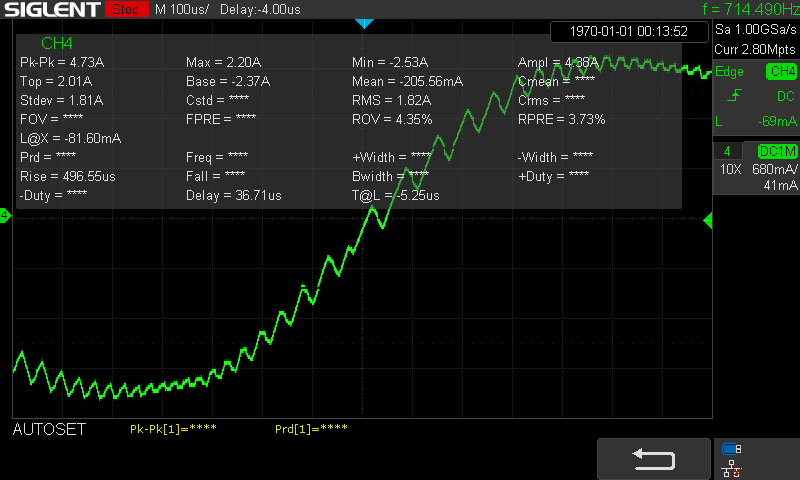Microstepping and other ponderings
-


6HC V1.02
The top image is 2x ms w/interpolation, 40 steps/mm. The bottom image is 16x I1, 320 steps. There may be subtle differences, but the motor sounds the same for each all the way up to 2400rpm.
What's the advantage/disadvantage of running either ms'ing? -
@3DPMicro that's the benefit of interpolation: at a steady speed the driver will insert interpolated microsteps quite accurately, making the motor quiet as if you were using high microstepping.
However, RRF rounds all axis positions to the nearest microstep. So higher microstepping provides higher resolution, up to the point at which the torque provided when commanding a single microstep of movement is too small to overcome the friction in the system.
In practice, going higher than x16 microstepping rarely gives any improvement in resolution, except that for extruders with very low steps/mm (e.g. 100) it may be beneficial to use x32 or x64.
-
@dc42 thanks for the response. It seems like I will be in pretty good shape then as I'll be using 1/4 -1/2 the mechanical ratio of a typical belt driven 3d printer at 16x ms (im using 10 or 20mm lead screws, not belts) Although either 4 or 8x ms would be apples to apples as opposed to the 2x in the example above.
TLDR
Have you been able to determine (or a gut feeling) at what point resolution effects print quality? On a typical 20t belt drive Cartesian printer at 16x ms the ms resolution is .0125mm which seems significantly finer than would be required from a positioning standpoint -
@3DPMicro no I don't have any feel for the point at which resolution affects print quality. It will obviously depend on the nozzle size. With a 0.4mm nozzle the extrusion width is typically 0.5 or 0.6mm, so my guess is that 0.02mm may be sufficient XY resolution on a Cartesian or CoreXY printer.
Z resolution may be more critical because it could lead to Z banding. A typical leadscrew-driven Z axis probably has more than enough resolution; nevertheless it's probably wise to choose the layer height to be an exact number of Z microsteps.
On a delta, resolution is more critical because the nature of motion on a delta means that you can get a moire pattern on a flat side of a print. I did some tests years ago and found that under magnification I could see the difference between 100 and 200 microsteps/mm, but for practical purposes the moire was insignificant in both cases.